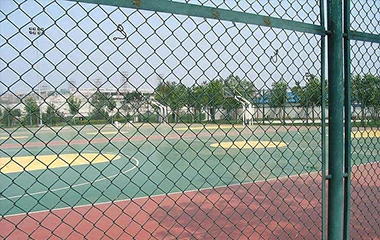 TEL:
+86-13102802206
TEL:
+86-13102802206
 Email:
fencenetting@china.com
Email:
fencenetting@china.com
 Language
Language
 TEL:
+86-13102802206
TEL:
+86-13102802206
 Email:
fencenetting@china.com
Email:
fencenetting@china.com
 Language
Language


Understanding the Cost of Iron Mesh Key Factors and Considerations
Iron mesh, a versatile material used in various applications ranging from construction to landscaping, is increasingly in demand. The cost of iron mesh can fluctuate based on several factors including the type of mesh, material quality, market demand, and geographic location. In this article, we will explore these factors to give you a comprehensive understanding of the cost of iron mesh.
Types of Iron Mesh
Iron mesh comes in various types, and each type carries its own price point. Common varieties include welded wire mesh, expanded metal mesh, and chain link mesh.
1. Welded Wire Mesh This type is made from crossing wires that are welded together at their intersections. The cost of welded wire mesh can vary based on the gauge (thickness) of the wires used and the spacing between them. Generally, the thicker the wire and the closer the spacing, the higher the cost.
2. Expanded Metal Mesh Created by cutting and stretching a flat sheet of metal into a mesh form, expanded metal is known for its strength and durability. Its cost is typically higher than welded wire mesh due to the manufacturing process and the increased material usage.
3. Chain Link Mesh Commonly used for fencing, chain link mesh is another popular option. The price is influenced by the height, gauge of wire, and whether it has a protective coating. Coated options, such as vinyl-coated chain link, generally come at a premium.
Material Quality
The quality of the iron used in the mesh significantly affects the cost. Higher-quality iron or steel typically results in better durability, resistance to corrosion, and overall longevity. For instance, galvanized mesh, which is coated in zinc to prevent rust, often costs more than uncoated options, but it offers improved performance, particularly in outdoor applications.

Market Demand and Supply
Like any commodity, the cost of iron mesh is subject to fluctuations based on market demand and supply dynamics. During periods of high construction activity or infrastructural development, the demand for iron mesh can spike, leading to increased prices. Conversely, during economic downturns or when projects are delayed, the prices may stabilize or even decrease.
Geographic Location
The geographic location of the buyer can also play a significant role in the cost of iron mesh. In regions where iron is readily available and there are fewer shipping costs, prices may be lower. On the other hand, locations that require importation or where iron resources are scarce may face higher costs due to increased logistics expenses.
Additional Costs
When budgeting for iron mesh, it is important to consider additional costs beyond the basic price. Installation, transportation, and maintenance can add up. For instance, hiring a professional for installation may increase the initial investment but provide peace of mind and ensure the mesh is properly fitted for its intended use.
Conclusion
The cost of iron mesh can vary widely based on several factors including the type of mesh, material quality, market conditions, and geographic considerations. Understanding these factors can help consumers and businesses make informed decisions when purchasing iron mesh. Ultimately, while the initial cost is important, considering the long-term benefits and durability of different options can lead to more cost-effective choices in the long run. Whether used in construction, security, or decorative applications, investing in the right type of iron mesh is essential for achieving the desired results.